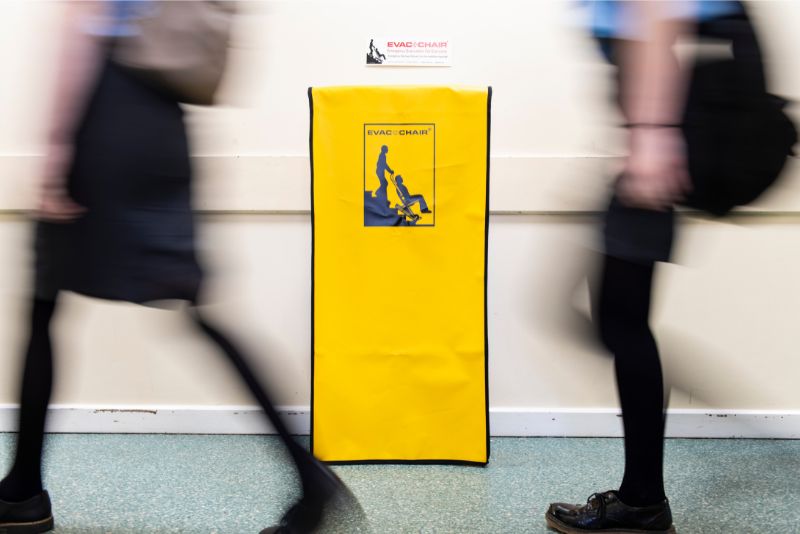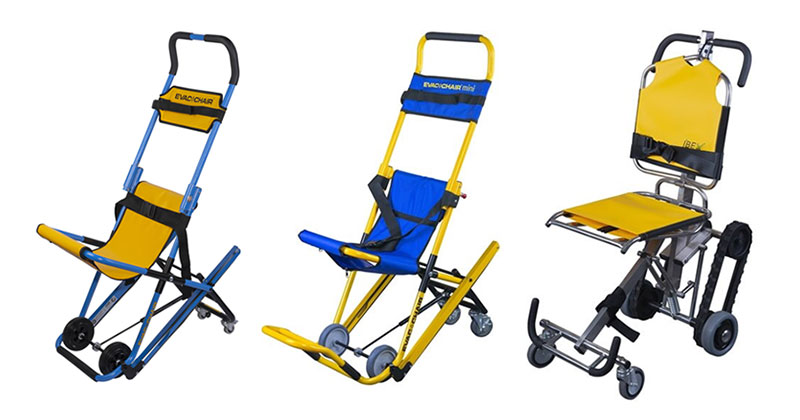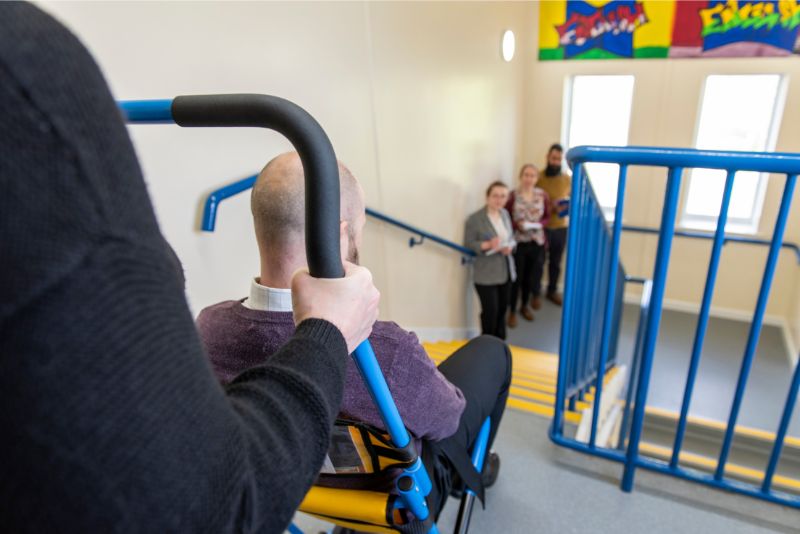-
Contact
Sales & Customer Service
0800 612 6537 support@safelincs.co.uk Live ChatDelivery Enquiries
0800 077 6149 - Resources
Fire & Safety Solutions
CALL OUR TEAM NOW 0800 612 6537
Lines open today 8am - 6pm
Free Delivery
on 100s of Products
Live Chat - Online
Instant help & Advice
Trade Discounts
and exclusive pricing
0% Credit Available
Open an account now
5 Star Customer Feedback
Emergency Evacuation Equipment
Why do you need an evacuation chair?
Evacuation devices such as chairs are designed for use in emergency situations to help evacuate people who are unable to exit the building unaided via the stairs. Multi-storey premises with occupants, employees, or visitors who may need support should have evacuation equipment to ensure that all building users can safely escape in an emergency.

Selecting the right fire evacuation equipment
Evacuation chairs
Evacuation chairs, also known as fire escape chairs, are a suitable evacuation solution for most corporate and public settings, as they enable individuals with some mobility to be safely transferred down flights of stairs and out of the building. It is reasonable to anticipate that an individual in a workplace, or who is visiting a public building, has the mobility required to leave the house either under their own power, with the use of a mobility aid, or with the assistance of a second individual. Therefore, they would have enough mobility to use these devices. Evacuation chairs will often be seen sited within or near to stairwells in multi-storey public and commercial buildings.
Evac+Chair offer a wide range of specialist products, suitable for a variety of circumstances. The 300H is a popular choice, which can be easily operated by one person on most standard stairs. For narrower stair cases and corridors, the 110 Narrow Aisle Evacuation Chair may be a more suitable alternative.
In some scenarios, it is necessary to move people up flights of stairs to reach ground level, or an appropriate emergency exit. Specialist devices such as the EVAC+CHAIR IBEX TranSeat are designed to facilitate the ascent, as well as descent of stairs. The innovative design allows just two users to safely guide the chair upstairs with minimal resistance, and it can also be used on spiral staircases.

Specialist Equipment - Immobile Patients
Some environments require specialist evacuation devices. Hospitals and nursing homes, for example, must account for the needs of patients with limited mobility, for whom an evacuation chair may not be appropriate. The care provider has a responsibility to incorporate strategies for the safe and effective evacuation of patients and residents with little or no mobility at all.
Evacuation sheets are designed to be installed under the mattresses of patients that would not be able to leave their bed in the event of an emergency. The sheets are unobtrusive when fitted, but offer side straps to secure the patient to their mattress and carry loops on each end. This allows two staff members to manually manoeuvre a patient out of a building on their mattress.
Evacuation sledges follow a similar principle, but are stored in a central location rather than on each bed and usually require the transfer of the patient from the bed onto the evacuation sledge. These sledges can often be used on stairs as they are padded and have pockets at their ends to stop the patient from sliding off the sledge.
Further information on evacuation types can be found on the Fire Safety Advice Centre website.
How many evacuation chairs do I need?
General guidance is that ‘ONE chair on ONE floor serves ONE person’. Up to date fire risk assessments and PEEPs are therefore essential; not only to determine how many evacuation chairs an organisation or building requires, but also where they should be placed.
How do evacuation chairs work?
There are a number of different types of evacuation chair available in the UK, all of which work slightly differently. In general, evacuation chairs have mechanisms which allow one or more individuals to assist another down flights of stairs safely.
Evac+Chairs use the weight of the person in the chair to apply downward pressure to a brake-belt system. The Evac+Chair system takes the weight out of the chair allowing for easy operation and smooth descent.

Who should operate an evacuation chair?
Evacuation chairs are simple to use, but do require specialist evacuation chair training for safe and legal operation. All evacuation chairs that are approved in the UK require at least one person to operate the chair. Safelincs can deliver Evac+Chair training for groups of up to 6, as well as ‘train the trainer’ courses for groups of up to 3 (enabling your staff to train other staff members internally). For more information, visit our Evacuation Chair Services page.
For more information visit our ‘Evacuation Chair Maintenance and Training’ or ‘Evacuation Equipment Legal Requirements’ guides.
Reviewed: 28/06/2023 (doc:764 V1.0). Our articles are reviewed regularly. However, any changes made to standards or legislation following the review date will not have been considered. Please note that we provide abridged, easy-to-understand guidance. To make detailed decisions about your fire safety provisions, you might require further advice or need to consult the full standards and legislation.



















